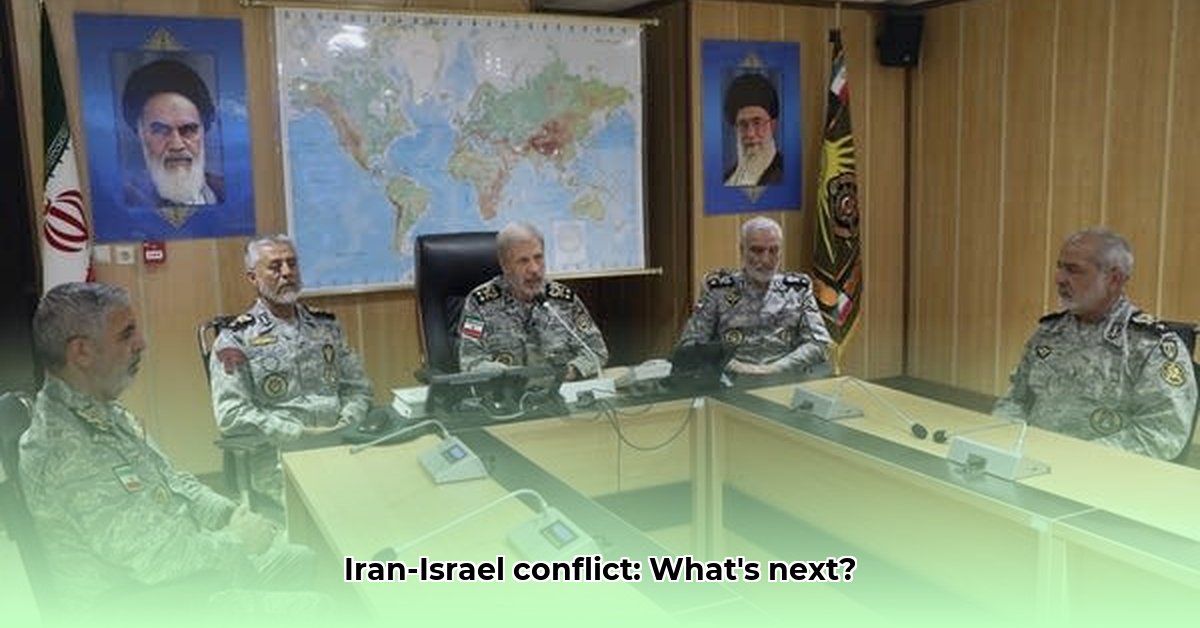
The June 2025 Israeli strikes on Iranian nuclear facilities ignited a volatile situation, leaving a complex and uncertain aftermath. While both Israel and the US touted the operation's success, independent analyses suggest significant portions of Iran's nuclear program remain operational, highlighting the difficulty of objective assessment in the immediate post-conflict period. This discrepancy underscores the inherent challenges in verifying information amidst conflicting narratives and the weaponisation of information itself. The repercussions extend far beyond the immediate conflict zone, impacting regional stability, international relations, and the global non-proliferation regime.
Unpacking the Damage: Conflicting Narratives and the Challenge of Verification
Determining the extent of damage to Iran's nuclear infrastructure presents a major challenge. Initial reports of crippling blows have been tempered by subsequent analyses suggesting the survival of key components. The conflicting accounts surrounding the conflict's origins further complicate the picture. Both sides have presented their actions as necessary responses to existential threats, a stark illustration of the manipulation of information in wartime contexts. This makes obtaining an unbiased, comprehensive understanding of the events exceptionally difficult. How can we reconcile divergent narratives and establish a factual basis for analysis when the very facts are contested? This lack of clarity raises crucial questions about the reliability of information sources and the challenges of impartial analysis in a highly politicised environment.
Beyond the Immediate Conflict: Geopolitical Ramifications
The June 2025 clash transcended a simple military engagement, significantly impacting the broader geopolitical landscape. Existing religious tensions were exacerbated, straining regional stability. International non-proliferation agreements faced a severe test, exposing vulnerabilities in traditional conflict prevention mechanisms, particularly in the face of unconventional warfare tactics and state-sponsored terrorism. Moreover, the internal political dynamics within both Iran and Israel further complicate the equation, hindering the development of a clear understanding of underlying causes and potential paths towards de-escalation. The degree of US involvement and the effectiveness of advanced weaponry, like bunker-buster bombs, remain key areas of speculation and uncertainty.
Future Predictions: Short-Term and Long-Term Scenarios
Predicting the future trajectory of the Iran-Israel relationship post-conflict is fraught with uncertainty. However, we can outline likely scenarios based on current trends and available information:
| Stakeholder | Short-Term Outlook (0-1 Year) | Long-Term Outlook (3-5 Years) |
|---|---|---|
| Iran | Damage assessment, infrastructure repair, potential internal political upheaval. | Re-evaluation of nuclear strategy, focus on domestic stability, potential shift in regional alliances. |
| Israel | Consolidation of military gains, strengthening of international alliances, domestic political consolidation. | Enhanced regional security posture, emphasis on intelligence and cyber warfare, adaptation to evolving geopolitical dynamics. |
| United States | Review of Middle East policy, potential imposition of further sanctions on Iran. | Continued engagement in the region, potential renegotiation of nuclear agreements. |
| International Community | Diplomatic efforts towards de-escalation, humanitarian aid to affected populations. | Strengthening of international arms control treaties, exploration of novel conflict resolution mechanisms. |
| Iranian Diaspora | Advocacy for peace, maintaining contact with families in Iran. | Continued campaigning for human rights and democratic reforms within Iran. |
Aren't the potential for renewed conflict and the long-term stability of the region deeply concerning, given the current geopolitical realities?
Risk Assessment: Navigating the Path to Stability
The risk of renewed conflict remains substantial. The following risks require immediate attention:
| Risk Factor | Probability (Qualitative) | Impact (Qualitative) | Mitigation Strategies |
|---|---|---|---|
| Ineffectiveness of Bunker Busters | Moderate | Prolongation of conflict, heightened tensions | Enhanced intelligence gathering, improved targeting precision, exploration of alternative strategies. |
| Ceasefire Sustainability | High | Renewed armed conflict, increased civilian casualties | Robust monitoring mechanisms, international oversight, regional diplomatic engagement. |
| Iranian Regime Stability | High | Regional instability, humanitarian crisis, potential for wider conflict | Support for moderate opposition, international pressure for political reforms. |
| Nuclear Proliferation | Moderate | Significant global security risks | Strengthening international safeguards, diplomatic pressure for adherence to existing non-proliferation treaties. |
Professor David Menashri, a leading expert on Middle Eastern politics at Tel Aviv University, emphasises the need for: "A proactive, multi-pronged approach that addresses both the immediate security concerns and the underlying causes of the conflict. This requires sustained diplomatic engagement, coupled with robust economic incentives for de-escalation".
Legal and Regulatory Implications: Setting a Precedent
The June 2025 events raise significant legal and regulatory concerns. The legality of the Israeli strikes under international law is questionable, particularly concerning the principle of pre-emptive self-defence. Potential violations of existing nuclear non-proliferation treaties and reports of civilian casualties introduce critical humanitarian law considerations. The international community's response will set a critical precedent, shaping future interpretations of international law and the rules of engagement in an increasingly complex global security environment. What are the implications of this conflict for the future of international law and the prevention of future conflicts?
Assessing Damage to the Iranian Nuclear Program: A Multifaceted Approach
Accurately assessing the extent of damage to Iran's nuclear program necessitates a comprehensive approach, integrating various sources of information. This includes analysis of satellite imagery, official statements (treated with cautious skepticism), reports from the International Atomic Energy Agency (IAEA), and intelligence assessments. Furthermore, the level of damage to underground facilities poses a significant challenge, necessitating advanced analysis techniques and acceptance of uncertainty and incomplete data.